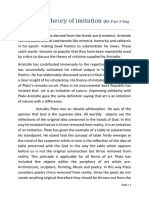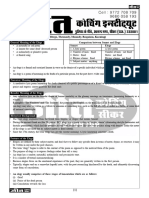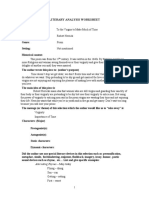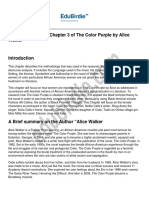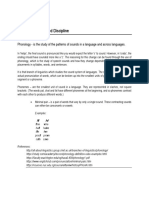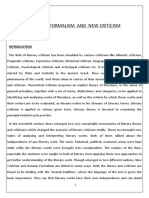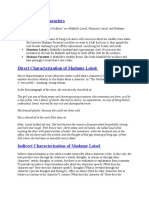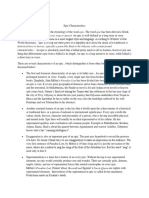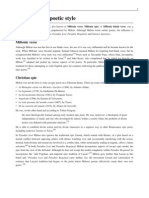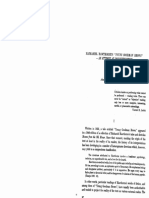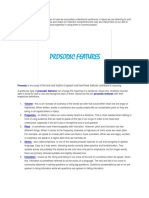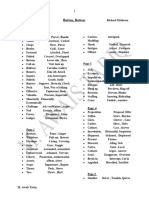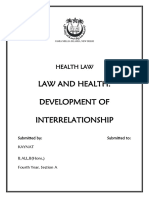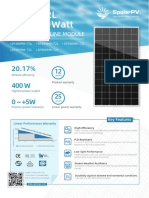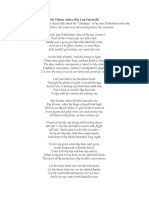Prosodic feature of speech. Explain in detail with examples.
Prosody refers to the rhythmic and melodic aspects of speech, encompassing various features
such as stress, intonation, pitch, rhythm, and tempo. These features play a crucial role in
conveying meaning, emotions, and emphasis in spoken language. Let’s explore the main
prosodic features in detail, along with examples:
1. Stress: Stress refers to the emphasis placed on certain syllables or words within a
sentence. Stressed syllables are typically pronounced with greater loudness, duration, and
pitch prominence compared to unstressed syllables. Stress patterns can vary across
languages. For example:
- English: “Beautiful” [bɪˈjuːtɪfəl]
- Spanish: “HÁblando” [ˈaβlando]
In these examples, the capitalized syllables receive stress.
2. Intonation: Intonation refers to the rising and falling patterns of pitch in speech. It
conveys information about sentence type, mood, emphasis, and syntactic structure.
Different intonational patterns can indicate questions, statements, commands, or
exclamations. For example:
- Question: “Are you coming?”
- Statement: “You are coming.”
- Command: “Come here!”
- Exclamation: “What a beautiful day!”
The pitch contour and patterns differ in each of these examples, signaling the intended
communicative function.
3. Pitch: Pitch refers to the perceived highness or lowness of a sound. It plays a role in
distinguishing between different tones and conveying emotions. For instance:
� - High pitch: “I’m so excited!”
- Low pitch: “I’m really tired.”
The pitch variations contribute to the emotional expression and emphasis in these utterances.
4. Rhythm: Rhythm refers to the timing and regularity of speech patterns. It involves the
alternation of stressed and unstressed syllables, giving speech a particular cadence.
Rhythm varies across languages and can affect the perception and flow of speech. For
example:
- English: “I want to go.”
- Japanese: “行きたいです” (Ikitai desu)
The timing and duration of syllables differ, reflecting the rhythmic patterns of each language.
5. Tempo: Tempo refers to the speed or rate of speech. It can be adjusted based on the
context, speaker, and communicative goals. A faster tempo may convey excitement or
urgency, while a slower tempo can indicate seriousness or emphasis. For example:
- Fast tempo: “Hurry up!”
- Slow tempo: “Please take your time.”
The tempo variations contribute to the overall expression and meaning of the utterances.
Prosodic features work together to create the melodic and rhythmic qualities of spoken language.
They add nuance, clarity, and emotional expression to communication. By using stress,
intonation, pitch, rhythm, and tempo effectively, speakers can convey meaning and intentions
beyond the literal words being spoken. This allows for more engaging and nuanced interactions
in spoken language.
� 6. Pauses: Pauses, also known as silences, are an important prosodic feature in speech. They
provide natural breaks between words, phrases, or sentences, allowing for clarity,
emphasis, and comprehension. Pauses can indicate a change in topic, provide time for the
listener to process information, or signal the end of a thought. Skilled speakers use pauses
strategically to enhance their communication.
7. Phrasing: Phrasing refers to grouping words together in meaningful units or phrases. It
involves the organization of speech into smaller chunks, often marked by pauses or
changes in intonation. Phrasing helps convey the syntactic structure and meaning of the
utterance. For example:
- “I saw a man on the street” (unphrased)
- “I saw | a man | on the street” (phrased)
The phrasing separates the subject, verb, and object, aiding comprehension and facilitating
natural speech flow.
8. Emphasis and Emotion: Prosodic features play a crucial role in expressing emphasis and
conveying emotions. By manipulating stress, intonation, pitch, and tempo, speakers can
highlight important information or evoke specific emotional responses. For instance:
- “I didn’t say he stole the money” (emphasis on “he”)
- “I’m so thrilled!” (high pitch and increased tempo)
These prosodic cues draw attention to the emphasized word or convey the speaker’s emotional
state.
� 9. Speech Rate: Speech rate refers to the speed at which someone speaks. It is influenced by
multiple factors, including language, context, speaker’s comfort level, and the complexity
of the message. Adjusting speech rate can impact comprehension, engagement, and
overall communication effectiveness. Skilled speakers modulate their speech rate to
match the needs of their audience and the purpose of their communication.
10. Accents and Dialects: Prosodic features also contribute to accents and dialectal variations
in speech. Different languages, regions, or communities may have distinct prosodic
patterns, which include variations in stress, intonation, rhythm, and pitch. Accents and
dialects can add richness and diversity to spoken language but may also pose challenges
for mutual understanding in cross-cultural or cross-linguistic communication.
Overall, prosodic features in speech are essential for effective communication. They provide
cues for interpretation, convey meaning beyond words, express emotions, and facilitate the
natural flow of conversation. Understanding and utilizing prosody enhances oral communication
skills and promotes clearer and more engaging interactions.








